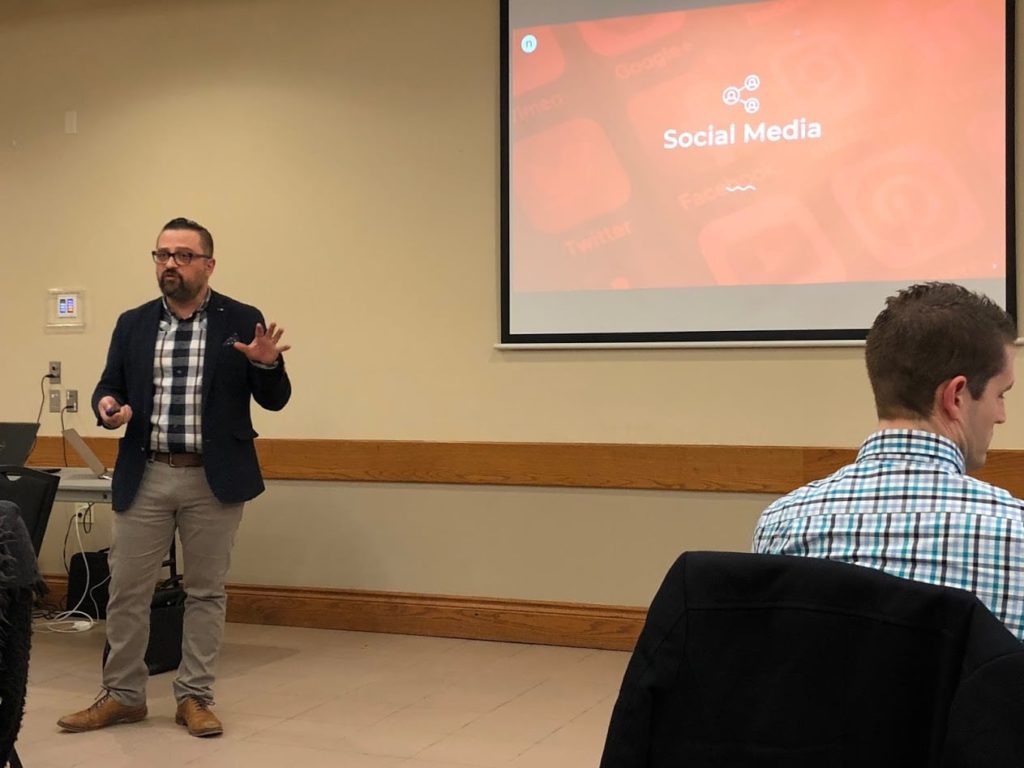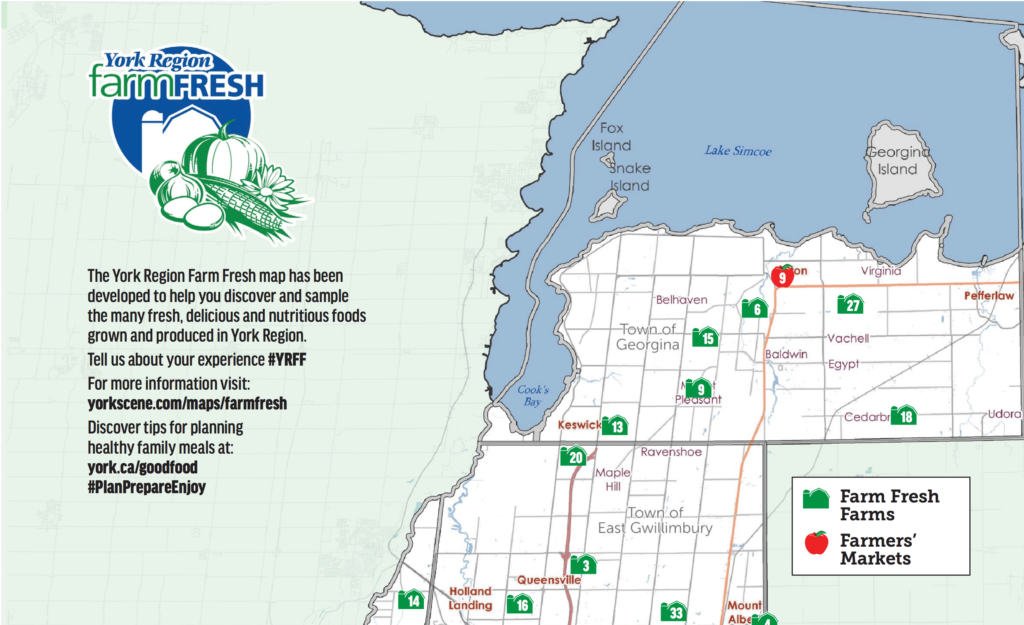Jun. 29, 2018
Digital Agriculture: Why Farmers Need to get Online

There’s a massive disconnect between consumers and their food. Many people don’t think about where their food comes from, other than which shelf it sits on at the grocery store, although that does seem to be changing somewhat. Others are interested in eating locally-sourced food, but may not know exactly where to start. As a farmer, you’re in the perfect position to engage with these community members and share your knowledge. These are the types of insights I received after a recent talk I gave for the York Region Farmers Council.
Reaching these people as it turns out is not always easy. Of course, you meet customers at farmer’s markets, but that’s a select group of people who are interested in eating healthily and supporting their local farms. Don’t get me wrong — you want to engage with the people you meet at these events and keep them coming back as loyal customers. However, there’s an even better way to connect with your community on a greater scale. By building a strong online presence, you can reach out to those consumers who may not be aware of your farm or where to find you, and engage with people who have purchased from you in the past. That means more first-time buyers, and more (and more frequent) repeat customers.
“Digital Agriculture” is becoming a buzzword in the industry for how you can integrate digital into the farming process. The use of big data is going to completely transform the industry, but it goes beyond that. Technology is here to stay and it’s in Farmers’ hands to take on how much they want to take advantage of it. Here’s how to build a digital presence for your farm, and how to leverage it to benefit both your farm and the surrounding community.
Start with a Website.
Your farm needs a website. If you don’t already have a website, your first step is to create one. Don’t be intimidated — you don’t need to have any technical knowledge or coding abilities to keep your website up to date. You do want to make sure that you update it often enough that any information on the page is accurate. Things such as what’s in season, what you specialize in or simply what’s going on at your farm can help pique interest. You will want to make sure that the consumers know where to find you, and why it’s worth buying fresh, local food from your farm. For example, add an “About Us” that tells your story and helps visitors feel a connection to your farm. If you believe in sustainable farming, talk about your approach. Use your website to inform and engage potential customers — the more connected they feel to your farm, the more they will see you as an integral part of the community and they’ll feel more invested in your success.
Make sure that the consumers know where to find you
Don’t Forget about SEO!
SEO (Search Engine Optimization) is all about making sure that the right people can find you online. It’s worth investing in, whether you’re investing your own time into learning about SEO or consulting with a paid expert. Either way, make sure that your website is optimized so that your local community can easily find you on the internet, even if they aren’t searching specifically for your farm’s name. For example, you might want to show up as a top result for “healthy food near me” or “eating local” when someone in your area searches for those terms on Google or any other search engine.
The best way to make sure your website ranks well in search engine results is to keep it populated with meaningful content. A blog is probably one of the most straightforward ways to do this: commit to publishing a new post at least once every two weeks. You can talk about what you’re producing, share the trials and tribulations of managing a farm, or answer frequently-asked questions. You’ll be creating more content for people to find online, as well as engaging with readers.
Be Active on Social Media.
Most people are on a social media platform these days — in fact, there’s a good chance you have a personal account already. But that account is for you as an individual, not your farm. So, if your farm does not already have a Facebook or Instagram page, make one! Make sure to include a link to your website, contact information, and any other information visitors might need to have. Here’s a great example from Brooks Farms and how they’re leveraging their Instagram account.
One of the most important parts of using social media for any business is staying active on it. Post updates regularly — share what farmer’s markets or events you will be at, and how customers can purchase from you. But your page should not be all about trying to find customers. Remember that it’s easier to make profits from loyal repeat customers than constantly trying to find new first-time customers. So, instead of trying to sound promotional all the time, use your page to tell a story and showcase what is happening on the farm, and share your experiences at the farmer’s market. You can also use your page as an educational resource, and explain why (and how) things work on the farm.
One thing to keep in mind is that on any social media platform — whether you use Twitter, Instagram, or Facebook — images always get better engagement. Use that to your advantage and post relevant pictures with your status updates. Chances are, you have a phone with a decent camera. Start snapping away as you go about your day on the farm.
Some ideas:
- Take a picture of the harvest and use it as an opportunity to talk about anything special about that produce: is it high in a particular vitamin? Do you grow a special variety? What’s the best way to cook it?
- If you have animals, take cute pictures of them. Introduce your farm dog, or your farm cats, or tell a heartwarming story about a particular dairy cow.
- See a pretty sunset over the fields? Take a photo and share the beauty of the landscape with the local community.
- Take a picture as you set up at a farmer’s market in the morning and post it with a caption of where you are, how long you’ll be there and what you’re selling.
Here’s a few other examples of farms doing social right.
- All Sorts Acres Farm has a great Website and Instagram Page
- South Pond Farms has done a great job with their site and are active with Instagram with nearly fifteen thousand followers and Twitter.
- Forsythe Family Farms know what’s going on when it comes to highlighting their farm with beautifully shot video. They are also very active on Facebook and even have their own YouTube channel.
Consider Email Marketing.
Can you collect customers’ email addresses through your website? Or can you print out a sheet to have at customers fill out at farmer’s markets to sign up for your newsletter? Use that list of email addresses to keep in touch with your customers: remind them of your schedule of events and where they can find you, or any news from the farm. Modern email marketing technology can make this really easy; just remember not to spam your list with a constant barrage of promotional emails.
In the beginning, building a digital presence can be tough. It’s hard to know where to start. But the benefits are worth it, especially for local farmers like you who are a key part of their community. If you need some help getting started, or getting more from your existing digital strategies, please contact us.
Book with us
Let’s accomplish what you are looking for, our team of experts are here for you.
Let's work togetherWarning: Working with our team may result in excessive creativity, uncontrollable 'aha' moments, and an addiction to perfect pixels. Please proceed with caution.





